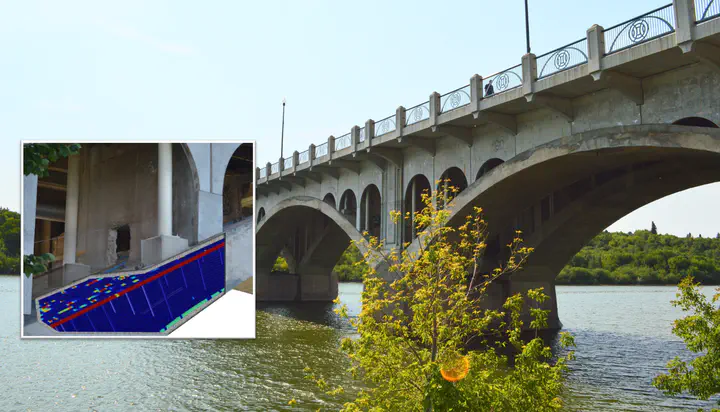University bridge rehabilitation assessment

The University Bridge in Saskatoon, a critical piece of infrastructure built in 1916, required a major rehabilitation effort beginning in 2015 to address aging structural components, particularly the deck, arches, and piers. This project delivered a technically rigorous and application-focused assessment to inform the City’s rehabilitation strategy.
Engineering Services Provided:
Field and Laboratory Investigations:
Concrete and steel samples from various sections of the bridge—including Arches C and D—were extracted and evaluated for compressive strength, pore solution chemistry, and electrochemical properties. Custom-built probes were deployed to monitor internal environmental parameters such as moisture saturation and oxygen availability, which influence corrosion activity.Mechanistic Modelling and Durability Forecasting:
Calibrated numerical models simulated chloride ingress, carbonation, and corrosion processes under real-world exposure. These simulations provided actionable insights into the influence of environmental conditions and construction materials on degradation rates, supporting long-term durability predictions.Rehabilitation Strategy Evaluation:
Engineering options—including silane sealers, galvanic cathodic protection, and fibre-reinforced polymer (FRP) wraps—were critically assessed for feasibility, risk, and expected service life extension. A phased field validation plan involving three monitored test panels was developed to evaluate performance under in-service conditions over a multi-year period.
This project exemplifies applied structural durability consulting that integrates field diagnostics, predictive modelling, and evidence-based strategy selection to support infrastructure asset management and extend service life in a cost-effective manner.